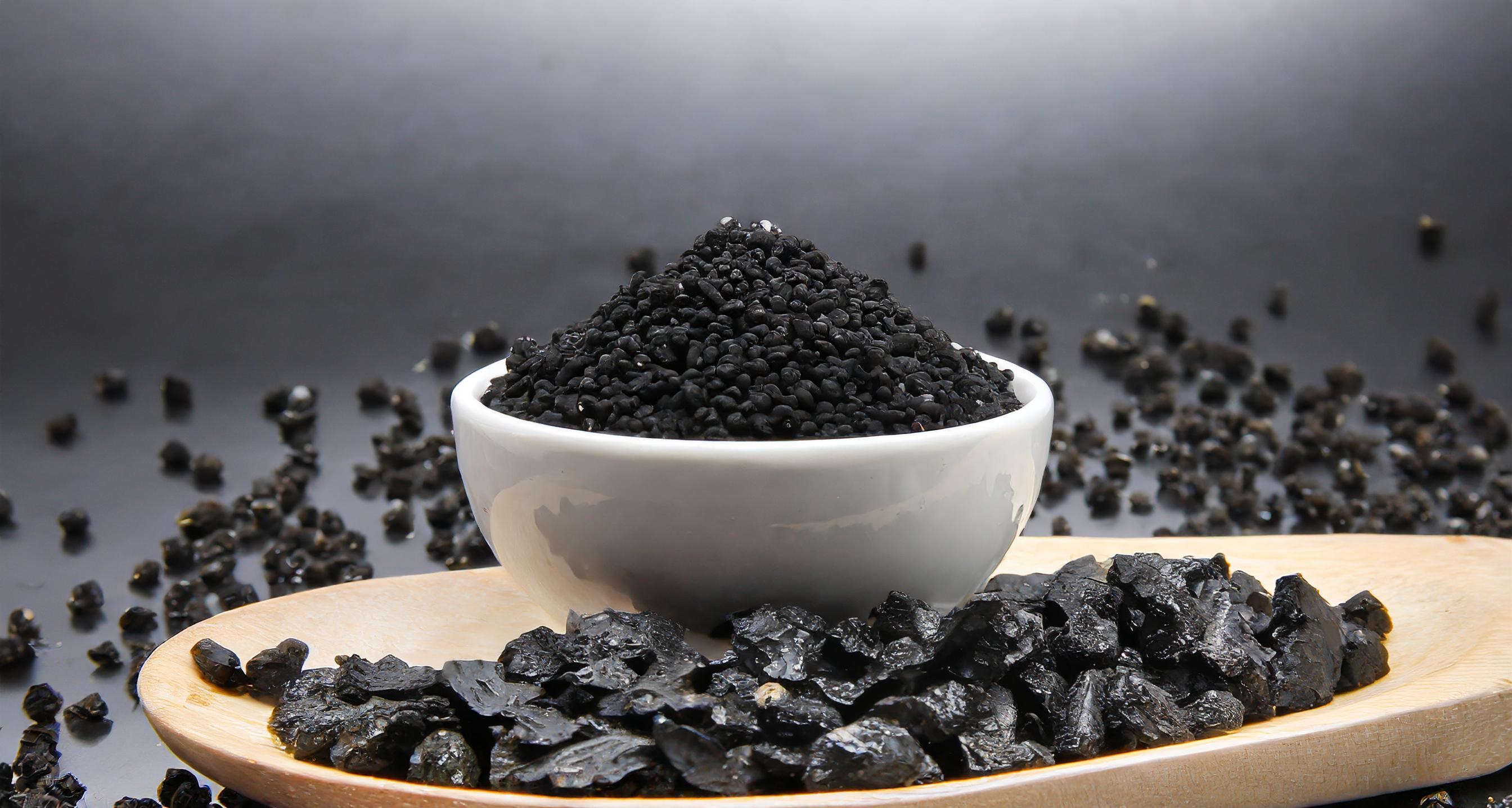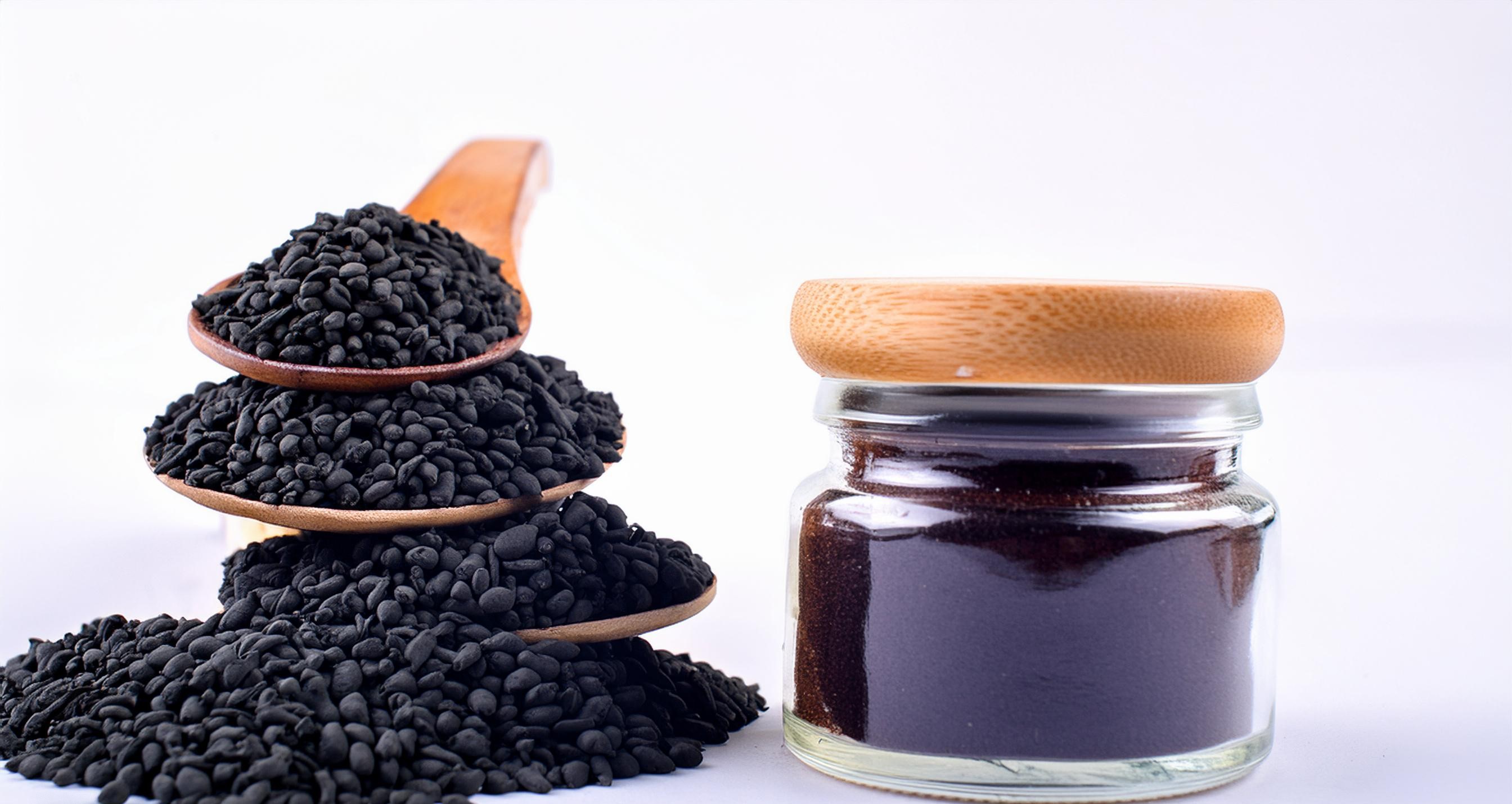 Shilajit is a tacky, tar-like substance that normally happens in high-elevation districts, particularly in the Himalayas, Altai Mountains, Caucasus Mountains, and other mountain ranges in Focal Asia. It structures over hundreds of years from the decay of plant and microbial matter, enhanced with minerals and natural mixtures. consists of many different organic and inorganic compounds, making it a complex substance. While the specific structure can change contingent upon variables, for example, geological area and handling techniques, the essential constituents ordinarily incorporate.
Shilajit is a tacky, tar-like substance that normally happens in high-elevation districts, particularly in the Himalayas, Altai Mountains, Caucasus Mountains, and other mountain ranges in Focal Asia. It structures over hundreds of years from the decay of plant and microbial matter, enhanced with minerals and natural mixtures. consists of many different organic and inorganic compounds, making it a complex substance. While the specific structure can change contingent upon variables, for example, geological area and handling techniques, the essential constituents ordinarily incorporate.
Fulvic acid:-
A key component of Shilajit and is responsible for many of its biological activities. It is a distinctive humic material that develops from the decomposition of organic materials and is well-known for its relaxing and cell-reinforcing qualities.
Humic acid:-
Another important organic compound found in Shilajit. Like fulvic acid, it is formed from the decomposition of organic matter and contributes to the bioavailability of minerals and nutrients
Minerals:-
Shilajit boasts a diverse array of minerals and trace elements, including Magnesium, Calcium, Zinc, Iron, Copper, Manganese, Selenium, Strontium, Silica, Chromium, Nickel, Cobalt, Vanadium and Lithium
Amino acid:-
Rich in a variety of amino acids, serving as the fundamental constituents of proteins. These include essential amino acids such as valine, glycine, proline, serine, tyrosine, and aspartic or glutamate acidic substances, besides basic amino acids ranging as histidine, isoleucine, leucine, lysine, methionine, phenylalanine, and threonine.
Vitamins:-
It contains modest quantities of nutrients, including vitamin A, vitamin B complex (B1, B2, B3, B6, B12), L-ascorbic acid, and vitamin E.
Other organic molecules may include lipids, sterols, terpenoids, and phenolic compounds, all of which contribute to their biological action.
The composition and concentrations of the constituents in Shilajit can fluctuate based on a multitude of factors, including where it is sourced from, the altitude, climate, and geological conditions of the region. Obtaining Shilajit from trusted suppliers who guarantee quality and purity through rigorous testing is crucial. This ensures that customers obtain a consistent and effective product.
The suggested dosage varies according to the product's form (resin, powder, capsules, liquid extract), active component concentration, individual health status, and specific health goals. Following the dosage guidelines on the product label or the advice of a healthcare provider is very important. Here are some broad recommendations regarding suggested dosages and formats, though.
Raw resins:
The typical dosage ranges from about 100-300 milligrams of raw Shilajit resin per day, this amount can be dissolved in warm water or milk and consumed once daily
Powder:
 Shilajit powder is usually taken in doses ranging from 300-500 milligrams daily. The powder can be blended into warm water, milk, juice, or smoothies.
Shilajit powder is usually taken in doses ranging from 300-500 milligrams daily. The powder can be blended into warm water, milk, juice, or smoothies.
Capsules:
In most cases, capsules containing regulated amounts of 100-500 mg of shilajit extract are taken. Observe the dosing rules on the item mark, which are typically a couple of containers each day, or as prompted by a medical services supplier.
Liquid Extract:
Fluid concentrates might accompany a dropper for exact dosing. Measurements can shift contingent upon the grouping of the concentrate, however, common proposals range from a couple of drops to a full dropper (e.g., 0.5-1 milliliter) each day.
If taken in excess, there may be negative effects, even though standard dosages are generally harmless. Thus, as indicated by estimation proposals is fundamental to forestalling expected hurt. Avoiding overdosing without first consulting a licensed physician is critical.
A food-drug interaction is a natural ingredient that may have health benefits; however, Like any other supplement or prescription, it may interact with certain foods or medications.
Benefits |
Side Effects |
|
Increase energy production in mitochondria and delay aging. |
May intereact with certain drug and their function. |
|
Regulates and improve circulation and enrich cell with minerals. |
May impact with blood sugar level, if someone is having hypoglycaemic drug. |
| Increase cognitive function. |
No evidence of safety use in pregnancy and lactation. |
| Reduce inflammation and pain. | Changes of heavy metal contamination. |
|
Enhance performance by improving energy |
Also have allergic reaction to some people. |
In regards to food-drug interactions with Shilajit, keep the following in mind:
Iron Absorption:
One of the numerous minerals it contains is iron. The absorption of iron can be expanded by eating this alongside iron-rich meals or supplementing with iron. Individuals with low iron levels may benefit from this, but those with normal or very high iron levels may receive excessive amounts of iron if they consume large amounts of it.
Medications:
Connect for certain drugs since they influence how the body processes and assimilates supplements. It could, for instance, enhance the effects of medications that are metabolized by the liver, thereby increasing their potency. Drug centers accessible for use structure liquids could result from this, which could cause coincidental unfavorable outcomes or even be frightful.
Also can interact with medications that affect blood clotting, blood pressure, or blood sugar levels. Individuals taking anticoagulants, antihypertensive, or antidiabetic medications should use caution when taking them and consult with a healthcare professional for personalized advice.
Caffeine:
Sometimes consumed alongside caffeinated beverages or supplements for its purported energy-boosting effects. While moderate utilization of caffeine is by and large safe for a great many people, consolidating it might upgrade its energizer impacts. People delicate to caffeine ought to be mindful about consuming energized items to stay away from overstimulation or antagonistic impacts, for example, expanded pulse or uneasiness.
Calcium:
Dairy items and enhancements containing calcium are incorporated. Calcium retention can be upgraded by devouring calcium-rich food varieties or taking pills with calcium. While certain individuals benefit from this for solid bones, exorbitant dietary calcium might achieve hypercalcemia, or raised calcium levels, particularly in those with clear ailments like kidney illness.
Antioxidant-rich Foods:
Shows its mitigating properties, and eating it with food varieties that are rich in cell reinforcements, such as vegetables, organic products, and green tea, could support its cancer prevention agent impacts. This might give further medical advantages, particularly in lessening irritation and cell oxidative pressure.
It's critical to know about any conceivable medication or dietary communications with Shilajit, particularly assuming that you take physician-endorsed medication or have hidden clinical issues. Before starting another enhancement routine, consistently get exhortation from a medical care supplier, like a specialist or drug specialist. This is particularly significant assuming that you have particular well-being concerns or are muddled about likely connections.
Things to know before consuming:-
It is considered safe for a great many people when taken at legitimate portions, yet there might be a few possible dangers or disadvantages to taking it. These include
Lack of regulation:
The varying quality between brands necessitates sourcing from reputable suppliers.
Possible contaminants:
Natural sources may contain trace heavy metals or pollutants.
Medication interactions:
Exercise caution when using medications that impact the chemical makeup of the blood and liver function in particular.
Side effects:
Rare, but may include digestive issues or allergic reactions, particularly at higher doses.
Limited scientific evidence:
More research is needed to fully understand its effectiveness.
Pregnancy and breastfeeding:
 Although there is insufficient safety data, it is generally recommended against usage without a physician's permission.
Although there is insufficient safety data, it is generally recommended against usage without a physician's permission.
Taking everything into consideration, it may have some medical benefits; however, it is important to use it safely and under the supervision of a medical professional. See an approved clinical benefits provider for individual heading if you have any various types of criticism concerning the upgrades.
